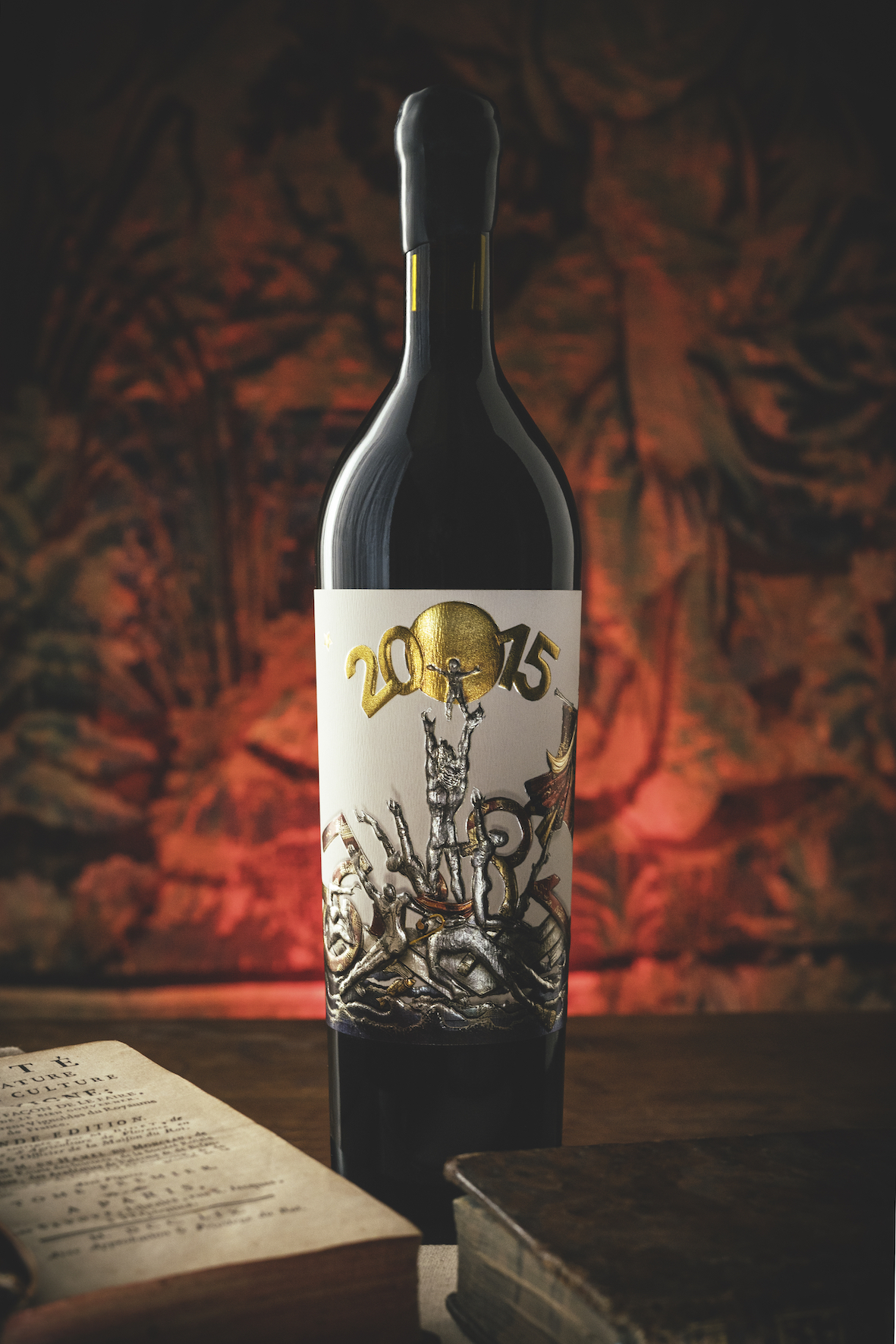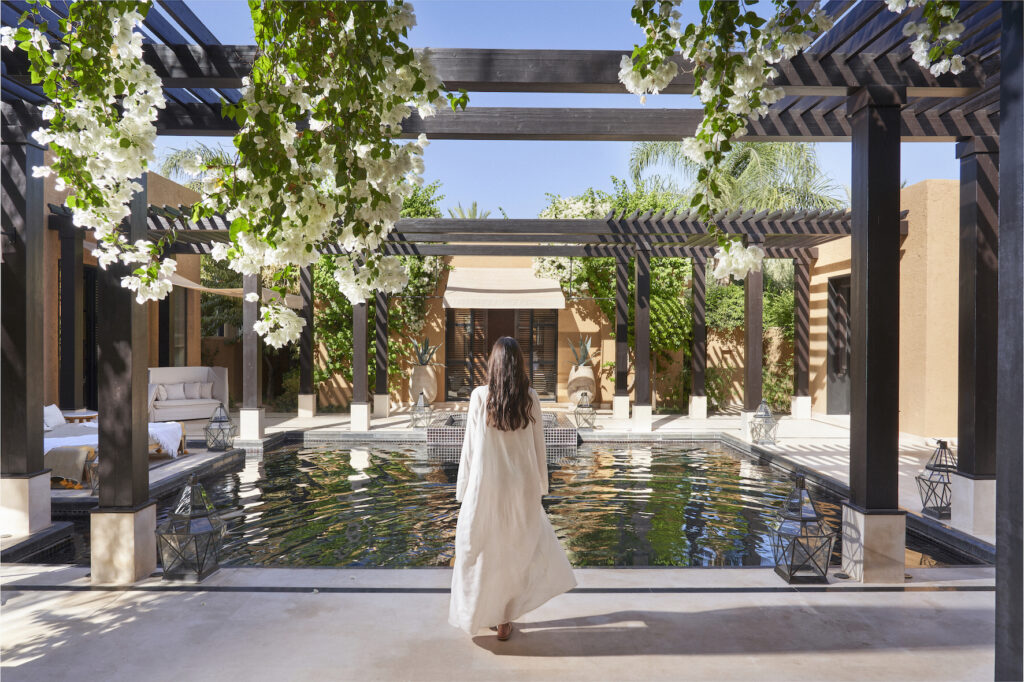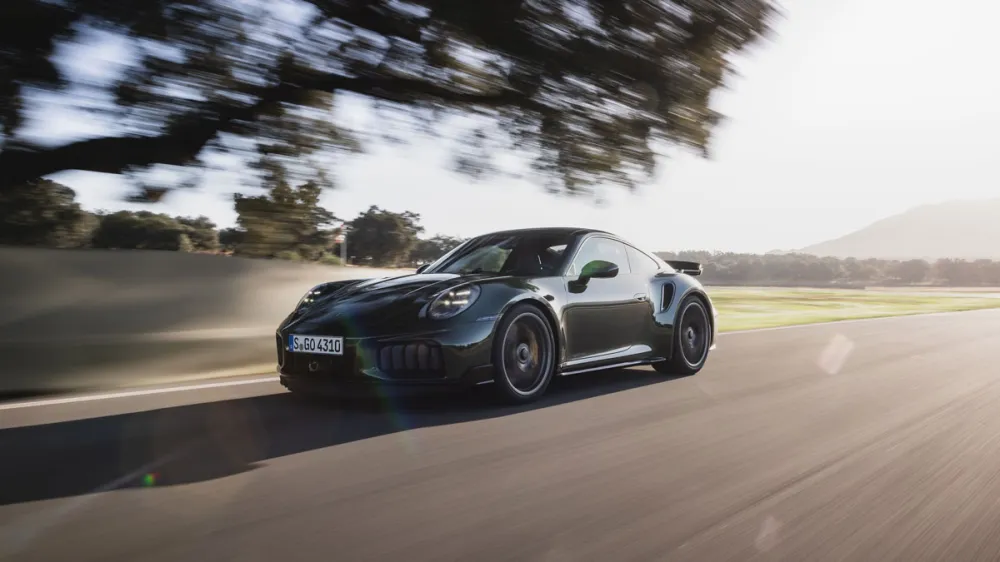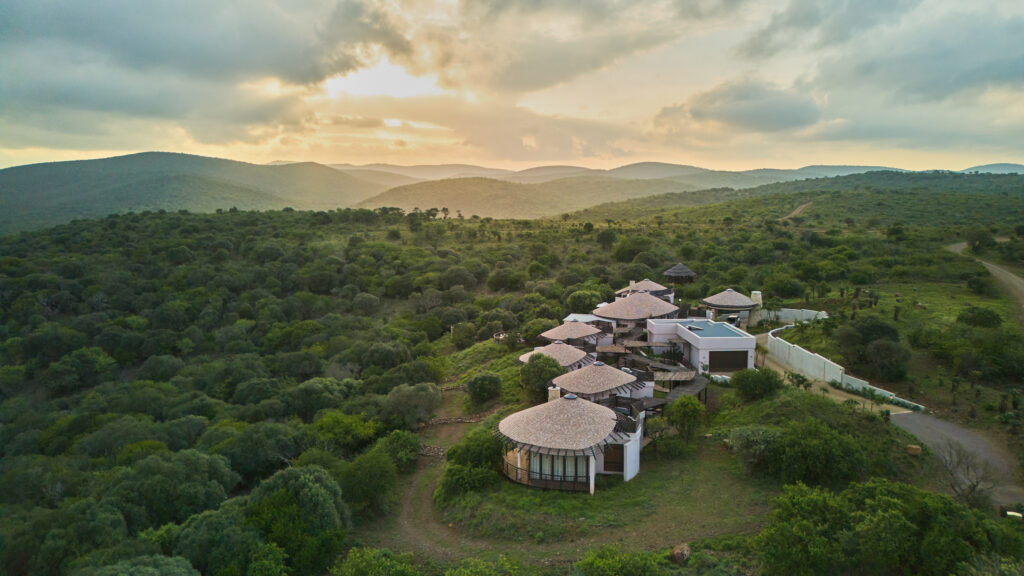Discover the greatest bottles of the year, selected by the editors at Robb Report Monaco & Côte d’Azur.
WORLD’S MOST EXPENSIVE: LIBER PATER
Bordeaux, France
A revolutionary fine wine from the Graves region. Maverick winemaker Loïc Pasquet produces less than 1,000 bottles a year. It is made from a blend of original Bordeaux varietals that have all but disappeared, but were prevalent in the Left Bank’s First Growths at the time of the 1855 Classification, including petite vidure, tarnay, pardotte, Saint-Macaire, castets, gros cabernet and petit verdot.
Thanks to the vineyard’s sandy soils, Pasquet’s vines are all on their own French rootstocks (francs de pied), rather than the grafted American rootstocks that have been planted in virtually all European vineyards since the phylloxera devastation of the late 19th century. “This is the original taste of Bordeaux,” says Pasquet, “not the varietal soup of newer grape varieties, such as merlot, that exists everywhere else in Bordeaux today.”
Provocatively, the beautiful label on the 2015 vintage depicts Liber Pater as Bordeaux’s rising savior surrounded by the sinking First Growths. Vinified in sandstone, rather than oak barrels, the 2015 is a triumph. Purity of fruit, intensity, complexity and a long finish make this the quintessential fine wine. With only 400 bottles produced, it’s the world’s most expensive wine on release and a must-have addition to any fine-wine lover’s collection. €30,000 per bottle.
LIMITED EDITION: IWA SAKE RESERVES
Toyama Province, Japan
DESIGNATION: Sake
MAKER: IWA
BOTTLING: 5 Reserves
ORIGIN: Toyama Province, Japan
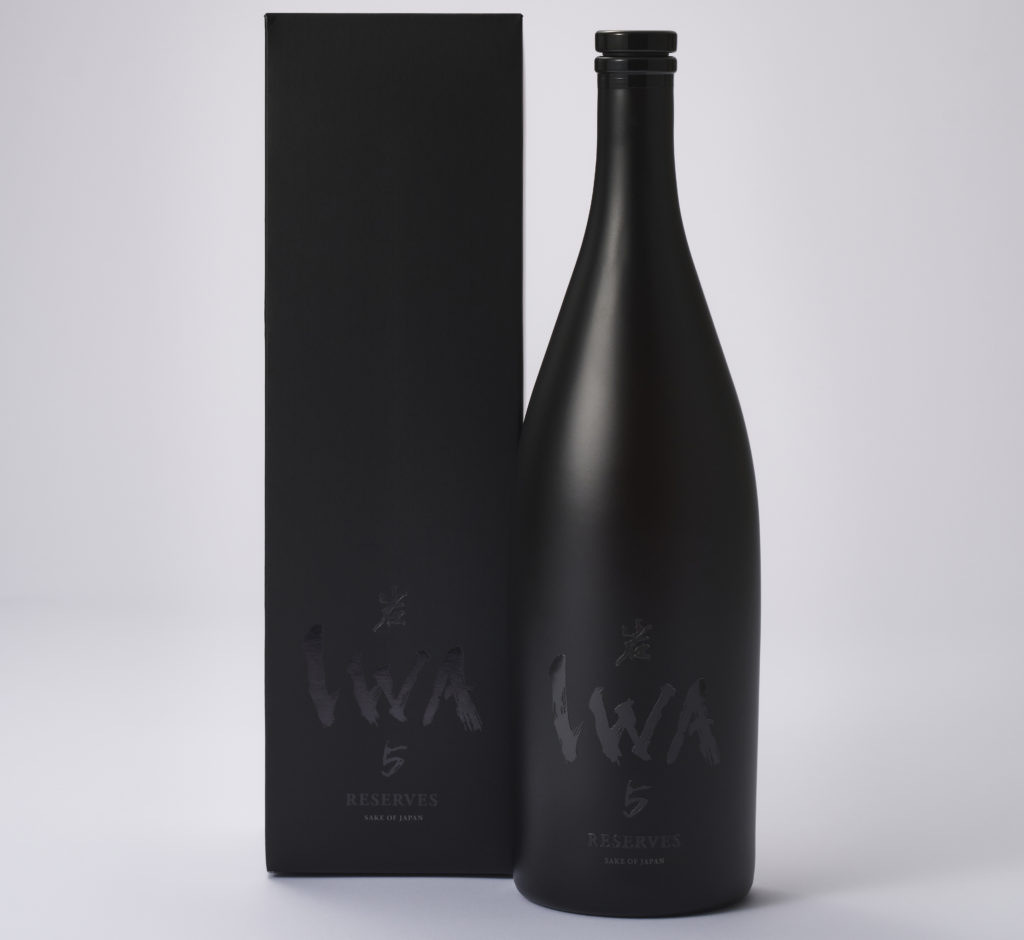
Bottled only in 1.8-litre iishobins, and with the IWA logo embossed in black (rather than white) on the glass, Richard Geoffroy, sake brewer and former chef de cave at Dom Pérignon, has created his version of Dom Pérignon P3 (the top-of-the-range, super-expensive Third Plentitude Champagne) in the world of sake.
IWA Reserves is a blend of reserve (i.e. aged) sakes, a concept that does not exist in the category and cannot be compared with Koshu, the sometimes blackishcoloured aged sake which some find undrinkable. Geoffroy makes Reserves with at least five years of library stock. “I wanted to showcase the highest potential of IWA with Reserves, a sake that has depth, complexity, energy and intensity,” explains Geoffroy. In a bizarre twist that only he could have dreamed up, whereas IWA 5 is designed to be a different expression from each year, the premium Reserves will be made on a continuous rather than batch basis: in other words, it will remain essentially the same for each bottling.
Sampling IWA Reserves, compared to the principal sake produced, IWA 5, it was on another level. It tastes expensive. It’s a seriously complex drink, with a profoundness and finish deserving of a top Burgundy white. It does not have the freshness of a new sake, but the evolution enhances its energy and vibrancy rather than diminishes it. Most importantly, it’s moreish —the alcohol levels are a very respectable 15 percent ABV. “There’s less primary fruit, and more umami and tertiary notes, but no mushroom or obvious oxidation”, Geoffroy effuses. With only 1,000 iishobins made, it’s very exclusive.
SUBLIME BURGUNDY: DOMAINE DE LA ROMANÉE-CONTI
La Romanée-Conti 2020, Burgundy, France
DESIGNATION: Burgundy red wine
MAKER: Domaine de la Romanée-Conti
BOTTLING: La Romanée-Conti Monopole Grand Cru
ORIGIN: Vosne-Romanée, Burgundy, France
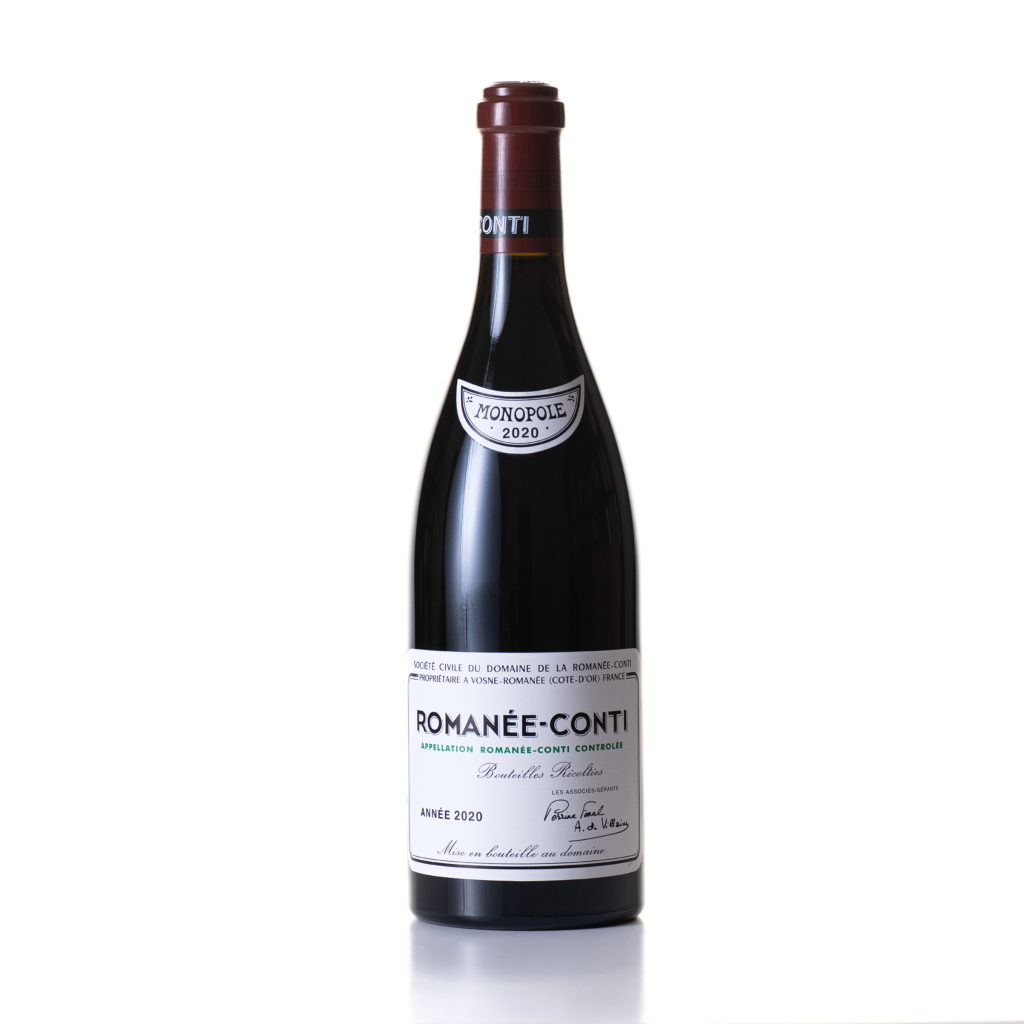
At the top of the estate’s pyramid of wine is perhaps the world’s most famed vineyard, the monopole of La Romanée- Conti (after which the village of Vosne-Romanée is named). For the 2020 vintage, 6,000 bottles were produced from 60-year-old vines which were harvested around August 27th—very early by historical standards, but in line with the hot and dry conditions of the vintage. At a release price of around €4,550 per bottle, it is the estate’s most expensive wine.
What does it taste like? Sublime. Although the nose was a little muted—after all, it’s super young for a wine of this complexity and quality—the mid-palate was a full blast of savoury fruit, flowery petals and sweet spices, evolving in the mouth and followed by a very long, delicate finish.
RARE FORTIFIED WINE: EQUIPO NAVAZOS
La Bota de Palo Cortado 121 “Navazos”, Jerez de la Frontera, Spain
DESIGNATION: Fortified wine
MAKER: Equipo Navazos
BOTTLING: La Bota de Palo Cortado 121 “Navazos”
ORIGIN: Jerez de la Frontera, Spain
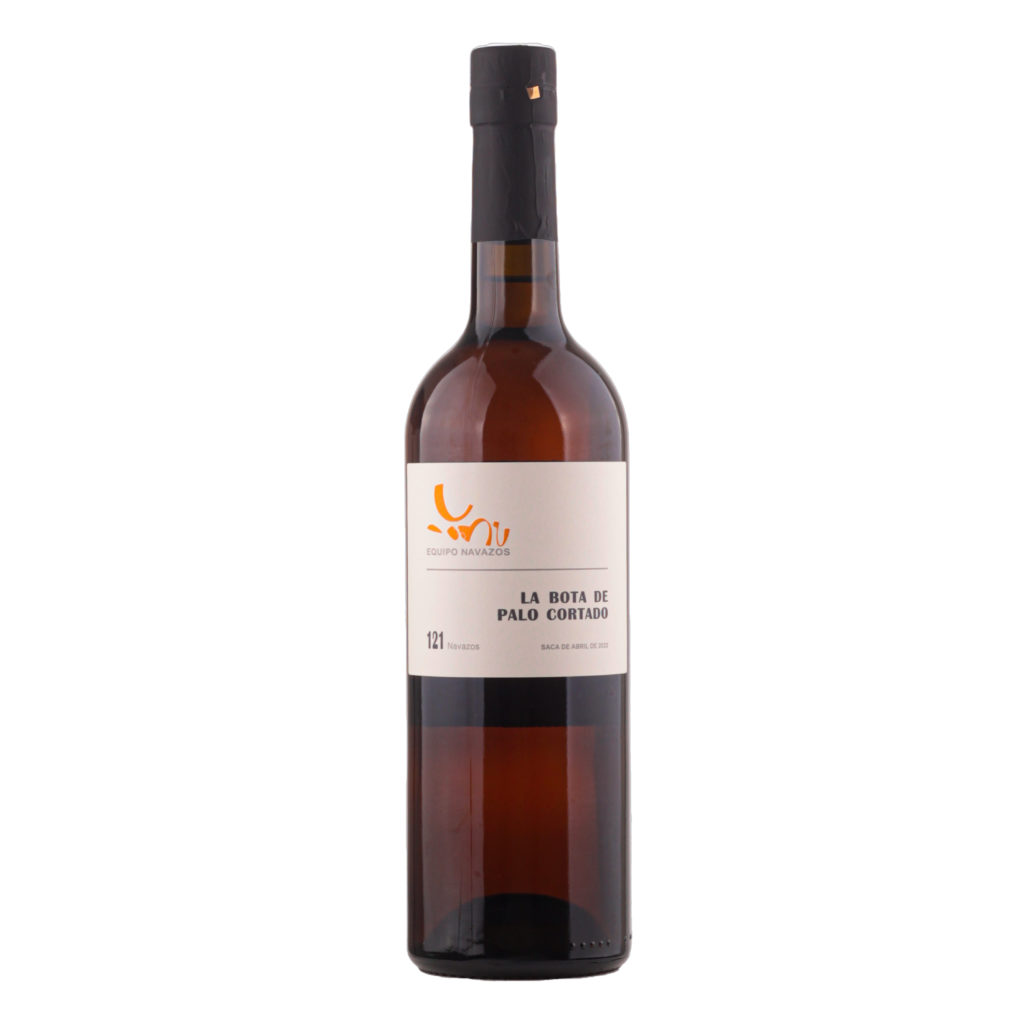
For sherry lovers and connoisseurs, Equipo Navazos is the hottest producer in the region. Focused on bottling older casks of sherry wine, with a focus on quality and craftsmanship, the wines are universally exceptional. Palo cortado is perhaps the rarest and most sought-after style of sherry. Starting its life either as a fino or amontillado, it unexpectedly loses its protective layer of flor (a thin veil of yeast that forms naturally on the surface of the barrel), resulting in oxidative ageing like an oloroso. The result is a style that characterises both fino and oloroso sherries: crisp, tangy yeast notes with rich, nutty and complex flavours.
The La Bota de Palo Cortado 121 “Navazos” is a single-vineyard, single-vintage wine from grapes harvested in 2010 in the Pago Miraflores La Baja from old vines (50 to 80 years old). On the nose, this fortified wine presents an intricate bouquet, with notes of toasted nuts, dried figs and a subtle hint of salinity that speaks to its coastal origins. The palate is equally captivating, offering a harmonious balance of richness and freshness. The wine’s 18 percent alcohol content is remarkably well-integrated, providing a smooth and velvety mouthfeel. The finish is long and alluring.
LAST OF ITS KIND: EGON MÜLLER
Alte Reben Scharzhofberger Riesling Kabinett 2020, Mosel Valley, Germany
DESIGNATION: Sweet wine
MAKER: Egon Müller
BOTTLING: Egon Müller Alte Reben Scharzhofberger Riesling Kabinett 2020
ORIGIN: Mosel Valley, Germany
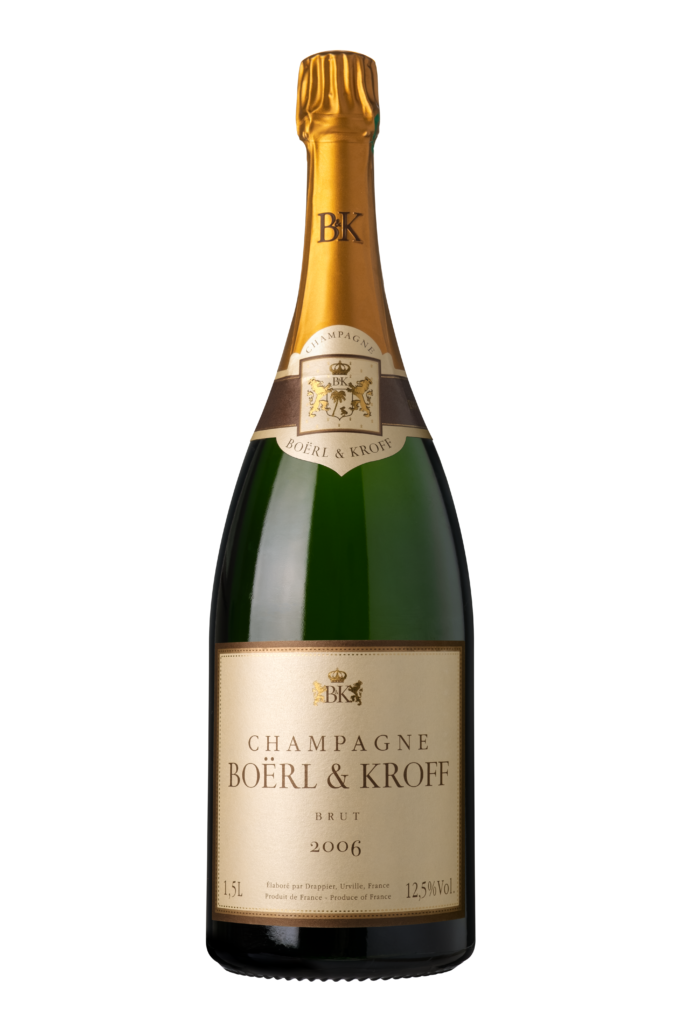
From the wein Kaiser, Egon Müller—Germany’s undoubted top producer—the Alte Reben is made from very low-yielding ungrafted vines of more than a hundred years of age that produce a more intense and complex kabinett than American rootstock grafted vines. Unfortunately, soon this small patch of vineyard will eventually be replaced with grafted vines and Alte Reben will be no more. So buy the wines while they still exist.
The 2020 Alte Reben is a wine full of ripe orchard fruits but with remarkable precision. Potpourri, lemons, apricots and the ripe scent of mandarin dominate the nose. The first thing you’ll notice on the attack is the relatively low acidity that you would typically associate with Egon Müller’s wines. This creates the impression of roundness and approachability. There’s a chalky minerality that you feel in the mid-palate. The finish is long, moreish and quite exceptional.
POTENTIAL UNICORN: BOËRL & KROFF 2006 (MAGNUM)
Champagne, France
DESIGNATION: Champagne (sparkling wine)
MAKER: Boërl & Kroff
BOTTLING: Boërl & Kroff 2006 (magnum)
ORIGIN: Champagne, France
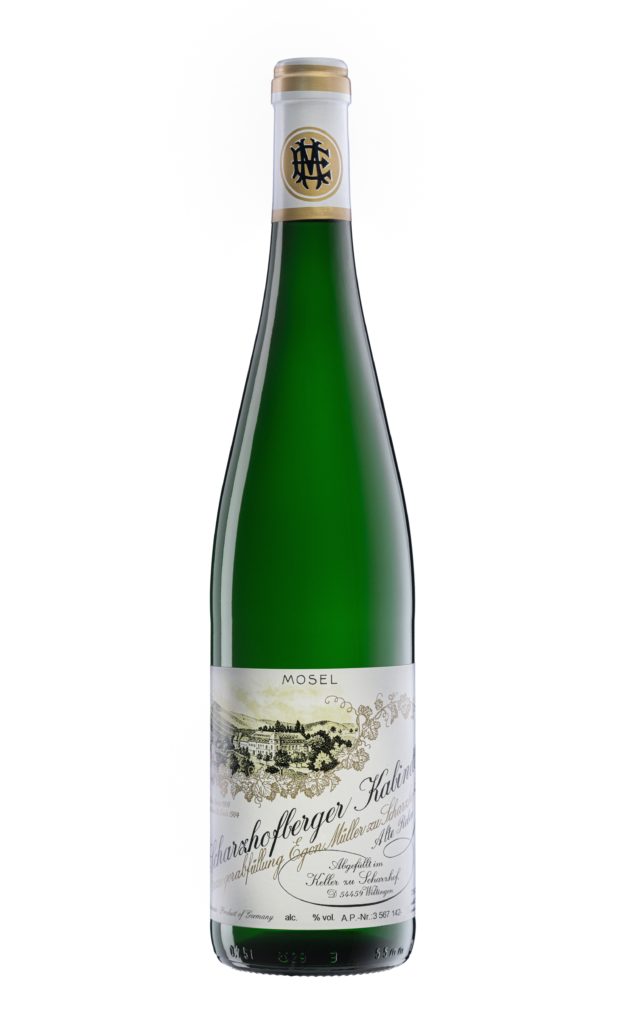
Produced only in large formats, specifically with long-term ageing in mind, Boërl & Kroff is arguably the most exclusive producer in the Champagne region. With a strong following of collectors and a tiny production, it has all the hallmarks of a unicorn for those wine lovers who are happy to fork out around €2,350 per magnum.
The 2006 Boërl & Kroff Brut Champagne is a blend of 90 percent pinot noir, 7 percent chardonnay and 3 percent meunier; 3,000 magnums were produced. The Champagne wafts from the glass with aromas of ripe stone fruits, toasted brioche, honeysuckle and a subtle minerality. On the palate, the wine displays a harmonious balance of richness and freshness, with a creamy, velvety mouthfeel and a persistent, elegant finish. In a magnum, this vintage should evolve slowly and gracefully in your cellar. The 95-point rating from Wine Advocate suggests this Champagne is a true standout, showcasing the exceptional quality and craftsmanship that Boërl & Kroff is known for.
AWARD WINNER: THE SADIE FAMILY WINES
Palladius 2021, Swartland, South Africa
DESIGNATION: White wine
MAKER: Sadie Family Wines
BOTTLING: Palladius 2021
ORIGIN: Swartland, South Africa
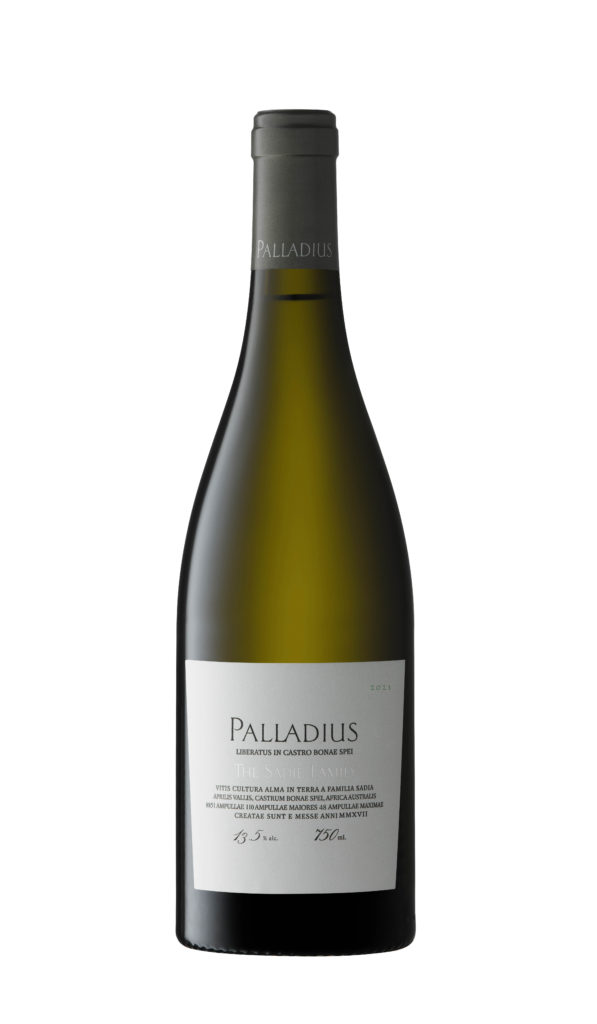
Eben Sadie is arguably South Africa’s top winemaker. This view has been endorsed by him winning the Golden Vines® World’s Best Rising Star twice, an award voted by 1,000 fine wine professionals from 120 countries, with the results verified by Deloitte.
Palladius is Eben’s top white wine, blended from 11 different grape varieties, including grenache blanc, clairette blanche, viognier and chenin blanc. The grapes come from 17 different vineyard sites across various soil types. This multi-site, terroir-driven approach marks it out from many other white wines produced in South Africa today. The wine undergoes extended ageing, with the 2020 vintage spending 24 months in barrel, helping to develop more complexity and richness.
The 2020 vintage displays cordial lime, citrus and a rocky, mineral nose distinctive of the vintage. Although rich, the wine is very fresh, and the extended barrel ageing has helped create a product with a creamy, velvety texture alongside a vibrant acidity that energises the wine. The mouthfeel is lighter than expected, helped by alcohol levels at 13.5 percent ABV. Flavours of stone fruit, white flowers and spice envelop the mid-palate, culminating in a long, persistent finish.
CRITICS’ FAVOURITE: CATENA ZAPATA
Adrianna Vineyard Mundus Bacillus Terrae Malbec 2019, Mendoza, Argentina
DESIGNATION: Red wine
MAKER: Catena Zapata
BOTTLING: Adrianna Vineyard
ORIGIN: Mendoza, Argentina

Founded in 1902, Catena Zapata is credited with putting Argentinian malbec on the global wine map. With Laura Catena now at the helm, the estate was named the world’s best winery to visit in the 2023 World’s 50 Best Vineyards awards.
The Adrianna Vineyard is located at an elevation of 1,450 m in the Uco Valley of Mendoza. Nicolas Catena Zapata is credited with pioneering the planting of vines at high altitudes despite the risks that grapes would not ripen properly. This high-altitude revolution led to the discovery of this vineyard, with the Mundus Bacillus Terrae Malbec considered as one of the best wines produced in Argentina today, often scoring 100 points from renowned critics. The vineyard has a perfect microclimate for grape maturation, with large diurnal temperature variations that contribute to the development of the grapes’ aromatic and flavour profiles.
The deep-purple coloured 2019 vintage is a concentrated and decadent red wine. On the nose, it displays incredibly rich aromas of stewed black cherries, anise, cedarwood, black olives and violets. The palate is full-bodied with powerful, rich tannins that exude intensity and concentration. There is a noticeable savoury black pepper note that is very appealing. Despite its intensity, the wine maintains a surprising freshness and liveliness, with a creamy texture that adds to its complexity. The high-altitude terroir of the Adrianna Vineyard contributes to the wine’s vibrant acidity and overall balance. This is a truly exceptional malbec that showcases the exceptional quality and unique character of Catena Zapata’s top vineyard site.
SUPERIOR VINTAGE: KRUG
Vintage 2011
DESIGNATION: Champagne (sparkling wine)
MAKER: Maison Krug
BOTTLING: Krug Vintage 2011
ORIGIN: Champagne, France
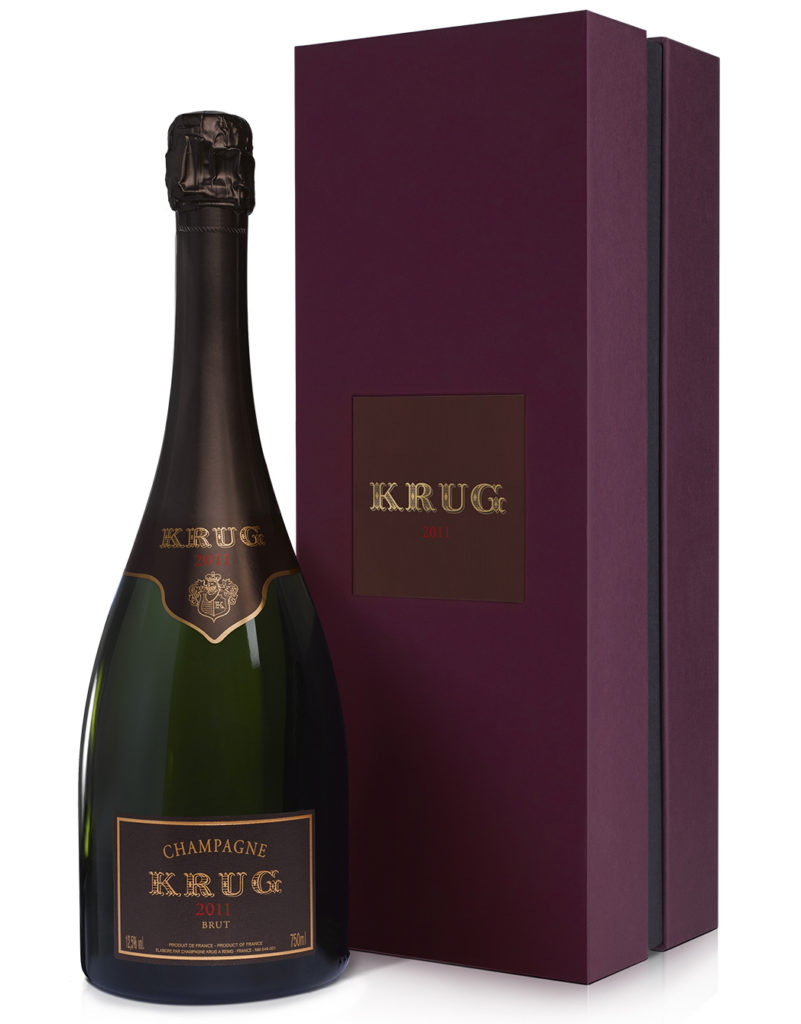
Rather than being the selection of the best wines from a particular year, Krug Vintage is the expression of that year according to maison Krug, with Julie Cavil, the chef de cave, aiming to capture the distinct character and story of each vintage. Having spent over 10 years ageing in Krug’s cellars before release, the 2011 is, according to the estate, “ample, generous, and assertive” in character.
Full-bodied and powerful, with a creamy texture, the wine is very intense, displaying ripe orchard fruits alongside toasted brioche, almonds and pastry, and a salty, chalky taste on the long, enduring finish. The wine’s freshness is thanks to a bright acidity that energises and lifts the wine in the mid-palate. Although still a relative youngster, you should not fear opening it now as it gives ample pleasure.
PEDIGREE RED: TENUTA SAN GUIDO
Sassicaia 2021, Bolgheri, Italy
DESIGNATION: Red wine
MAKER: Tenuta San Guido
BOTTLING: Sassicaia 2021
ORIGIN: Bolgheri, Italy
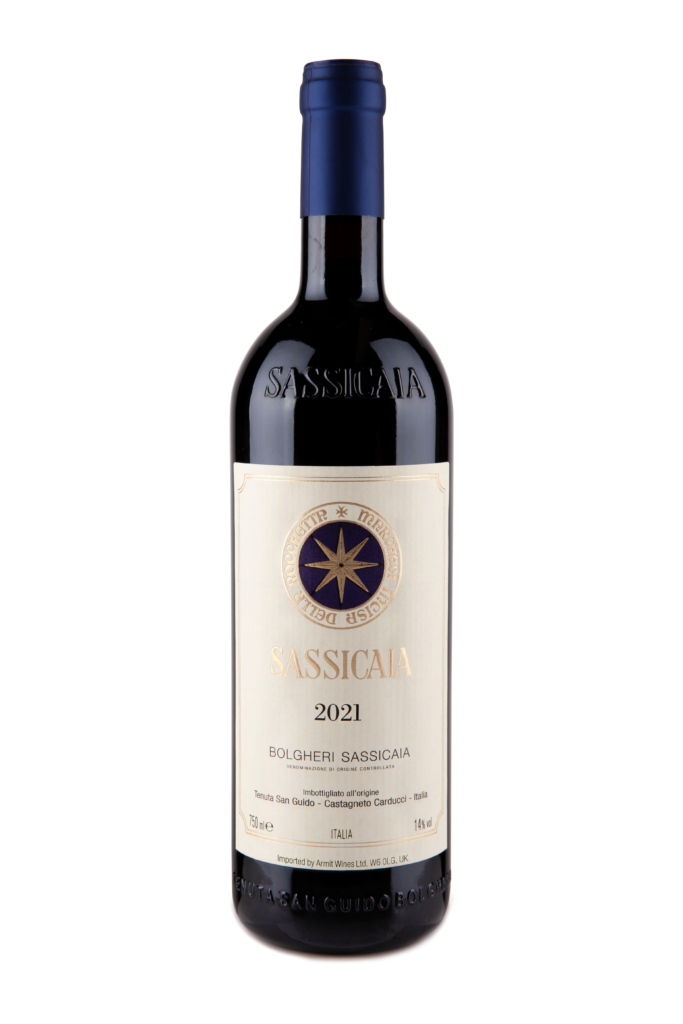
Arguably Italy’s most iconic wine and boasting its own appellation, DOC Bolgheri Sassicaia, Sassicaia has a pedigree and aristocratic allure that makes it one of the most collectable wines in the world today. Now guided by family member Priscilla Incisa della Rocchetta, the estate was a pioneer in its plantings of non-traditional grape varieties in Tuscany, specifically cabernet sauvignon and cabernet franc. The huge success of Sassicaia, which was not commercially available in its early vintages (1945-1967), led to the creation of the new “Super Tuscan” category that prompted changes to Italy’s wine classification system.
The vineyards are located on the family estate in the Bolgheri region, close to the Mediterranean Sea, at an altitude between 100 and 300 m, with a unique microclimate and gravelly, Bordeaux-like soils that are ideally suited for growing cabernet grapes.
The 2021 vintage was recently launched to widespread acclaim, with many critics viewing the release as having long ageability. Aged for 24 months in a mix of old and new oak casks, the wine has a nose full of crunchy red fruits, cherry liqueur, fresh leather, lavender and hints of mocha. The mid-palate is medium-bodied and balanced, with a velvety texture, as flavours of ripe red fruits mingle with tobacco, fresh herbs and savoury spices. There are plenty of fine-grained tannins on the palate, and a crisp freshness from the lively acidity that runs through the wine. Already approachable and pleasuresome, the wine has a long, persistent finish that ends with a saline note.
ALLSTAR PRODUCER: RIDGE VINEYARDS
Monte Bello 2021, California, USA
DESIGNATION: Red wine
MAKER: Ridge Vineyards
BOTTLING: Ridge Monte Bello 2021
ORIGIN: Santa Rita Hills, California, USA

Ridge Vineyards is a Californian winemaker known for its European-styled wines: full of subtlety, elegance and complexity, and an ability to age for decades. From a site in the Santa Cruz mountains, Monte Bello is its star wine, and has been compared with Sassicaia as “twins separated at birth”. With a long history, Ridge was a pioneer in the use of cabernet sauvignon, cabernet franc and petit verdot from a time when this was unconventional for California wines.
The Monte Bello vineyard is located at 790 m, with the mountains providing a unique microclimate and terroir. Unlike many Napa cabernets, Monte Bello typically has lower levels of alcohol, around 13 percent ABV, which helps create a more balanced and age-worthy wine. Having won the Golden Vines® Best Fine Wine Producer in the Americas Award three times—elevating the estate to the status of AllStar Producer—the iconic status of this wine is unquestionable.
The 2021 vintage is a blend of 64 percent cabernet sauvignon, 31 percent merlot, 4.5 percent petit verdot and 0.5 percent cabernet franc. The wine, purple in colour, displays notes of blackberry, cassis, black olives, soy and hints of anise, violets and sweet toasty oak. The mid-palate is full-bodied and powerful, with a velvety, polished texture from the ripe, refined tannins. With flavours of ripe plum, dark berries, tobacco, spices and herbs, this wine is surprisingly accessible and enjoyable in its youth. Despite the vintage being affected by droughts and forest fires, the 2021 should age well and add more complexity as it ages in bottle over the next several decades.
BEST CHAMPAGNE: DOM PÉRIGNON
P2 2004, Champagne, France
DESIGNATION: Champagne
MAKER: Dom Pérignon
BOTTLING: P2 2004
ORIGIN: Champagne, France
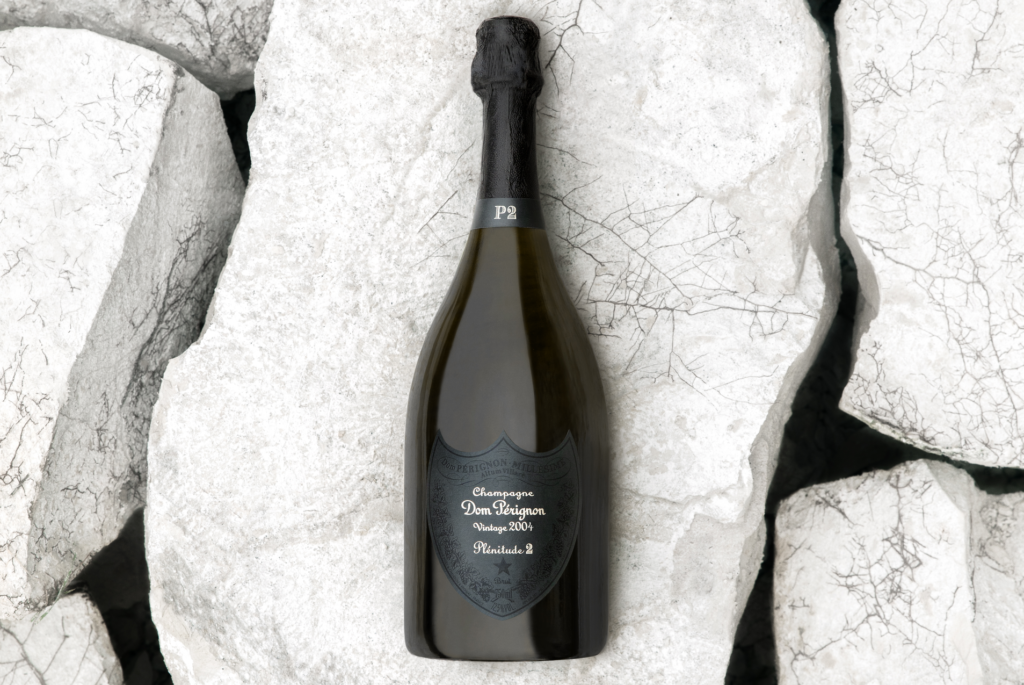
It was the legendary chef de cave Richard Geoffroy who introduced the world to the Plenitude range of Champagnes. Dom Pérignon, a prestige cuvée itself, now has three principal expressions distinguished by years of ageing on the lees (dead yeast) before the wines are disgorged and finally released. P1 is typically released after nine years, P2 after 12 years, and P3 after 20 years of ageing. The maison produces less than 10 percent of the quantities of P1 for the more complex and expressive P2 bottlings, and a fraction of that for the super-rare and expensive P3s.
The 2004 P2 is a truly beautiful expression of what longer ageing on lees can bring to a wine of Dom Pérignon’s prestige and quality. Vincent Chaperon, the current chef de cave, highlights the evident balance and ease of drinking, “evolving between tension and weightlessness”. Aromas of roasted nuts, brioche and honeysuckle dominate the nose, whereas the mid-palate is energetic and complex, with a silky texture and a long, exciting finish that has you wanting for more. A wine for all seasons.
HISTORIC LABEL: CHÂTEAU D’YQUEM
2009, Sauternes, France
DESIGNATION: Sweet wine
MAKER: Château d’Yquem
BOTTLING: Château d’Yquem, 2009
ORIGIN: Sauternes, Bordeaux, France
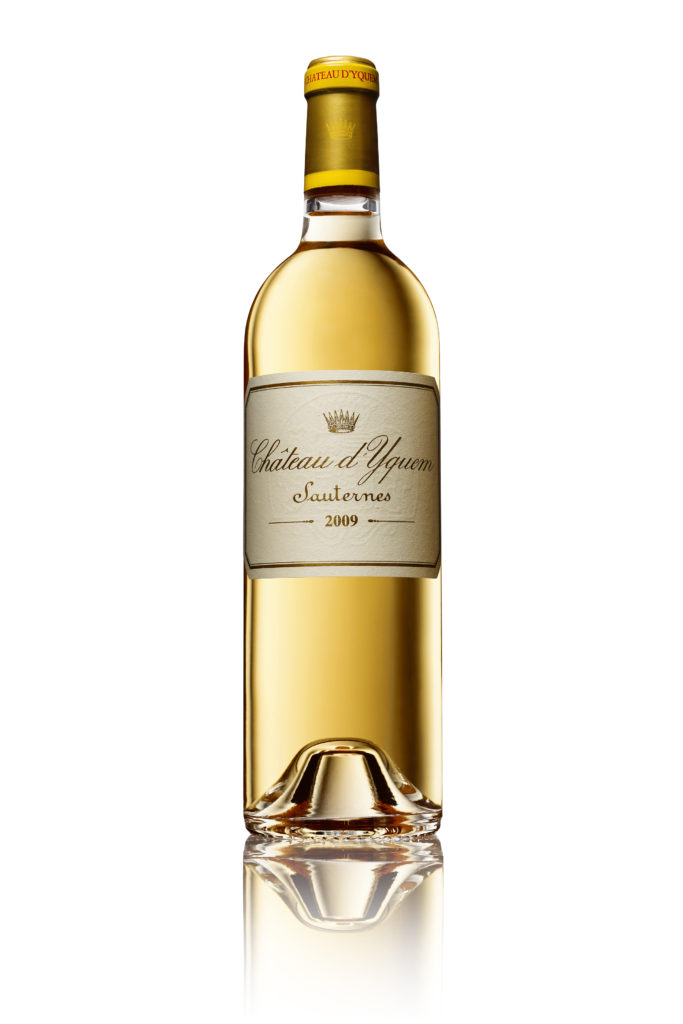
tThe famed castle frontage of Château d’Yquem dates from the days of Léon de Sauvage d’Yquem in 1711, before the estate passed through marriage to longtime owners, the de Lur-Saluces family. The history behind his Château is simply unrivalled. Thomas Jefferson was enraptured by d’Yquem, in particular the 1784 vintage. Perhaps the most famed of all was the “comet” vintage of 1811 which is on every d’Yquem lover’s bucket-list. The 1855 Classification, which still resonates today, rated d’Yquem as Premier Cru Supérieur, acknowledging that it was of a higher calibre than any other wine in the Bordeaux region.
The 2009 vintage is simply stunning, with a great balance of richness and fresh acidity. The winemaker Lorenzo Pasquini says it reminds him of the 1893 vintage. Light amber coloured at this stage in its development, opulent aromas of jasmine, lemon curd, honeysuckle and vanilla invade your senses. On the midpalate, the liquid is full-bodied and sweet, with hints of truffles and licorice around flavours of apricot, pineapples and honeycomb. This hedonistic and still youthful vintage d’Yquem has a triumphant, long finish that will not disappoint.
ALL-TIME GREAT: CHÂTEAU CHEVAL BLANC
2009, Saint-Emilion, France
DESIGNATION: Red wine
MAKER: Château Cheval Blanc
BOTTLING: Château Cheval Blanc Grand Vin, 2009
ORIGIN: Saint-Émilion, France
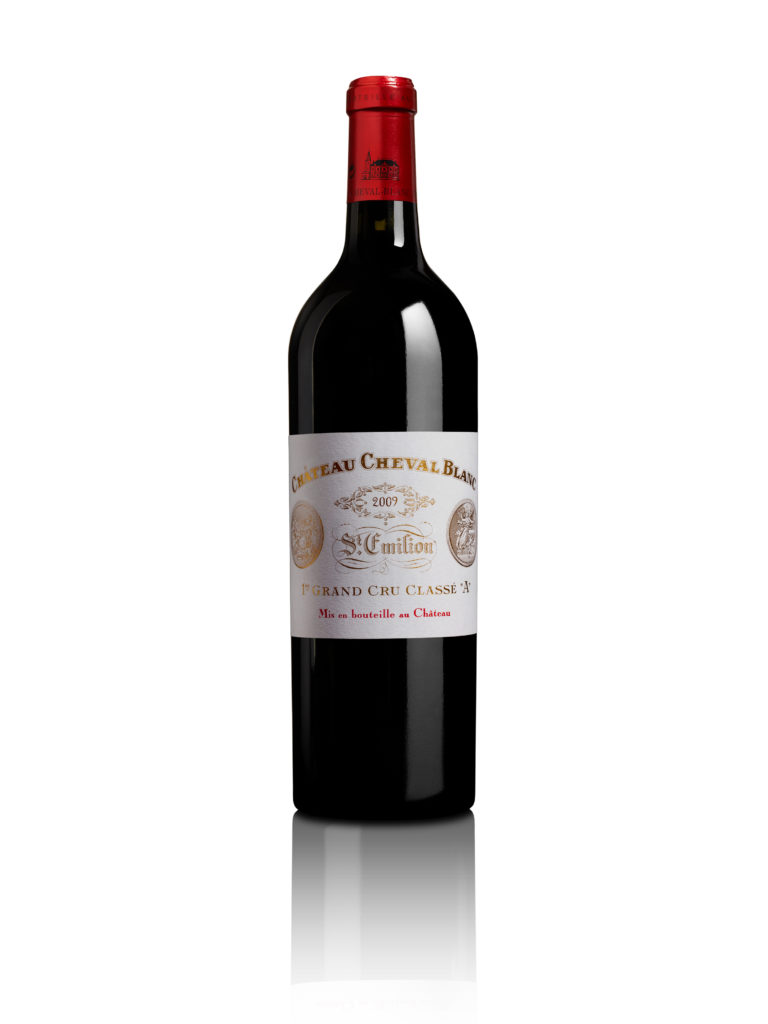
Dating from 1832, Château Cheval Blanc’s Saint-Émilion vineyard, surrounding the winery and beautiful château, and very close to the border of the Pomerol appellation, is known for its distinctive terroir of gravel and clay soils. As a result, there is a high proportion of planted cabernet franc, which contributes to the wine’s unique profile. Thanks to the film Sideways, most people know that the 1947 vintage produced one of the most legendary wines ever made.
The 2009 was acclaimed at the time of its release as one of the greatest ever vintages. The blend is 60 percent merlot and 40 percent cabernet franc with alcohol at 14 percent ABV. It’s rich and complex, floral and fruity on the nose with hints of tobacco leaf and mint, with a wonderful, rocky mineral note as the wine aerates in the glass. The palate is very fine and silky, while maintaining a wonderful elegance on account of the fine-grained tannins and fresh acidity. The finish is characterised by a refined concentration

